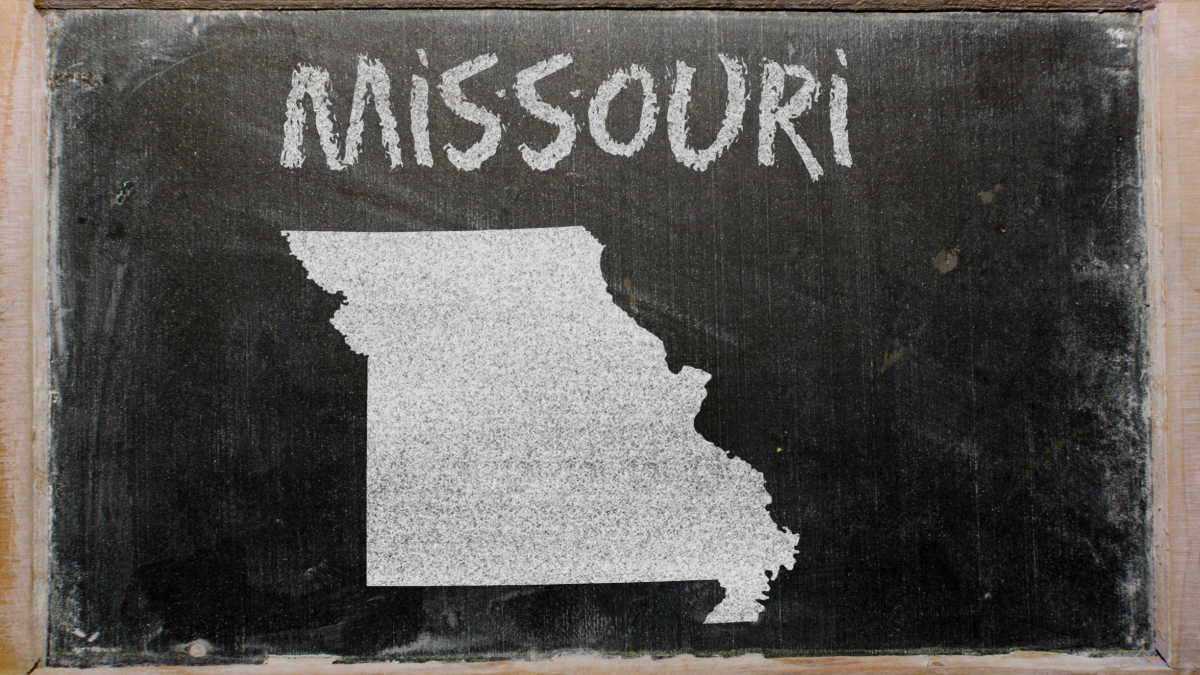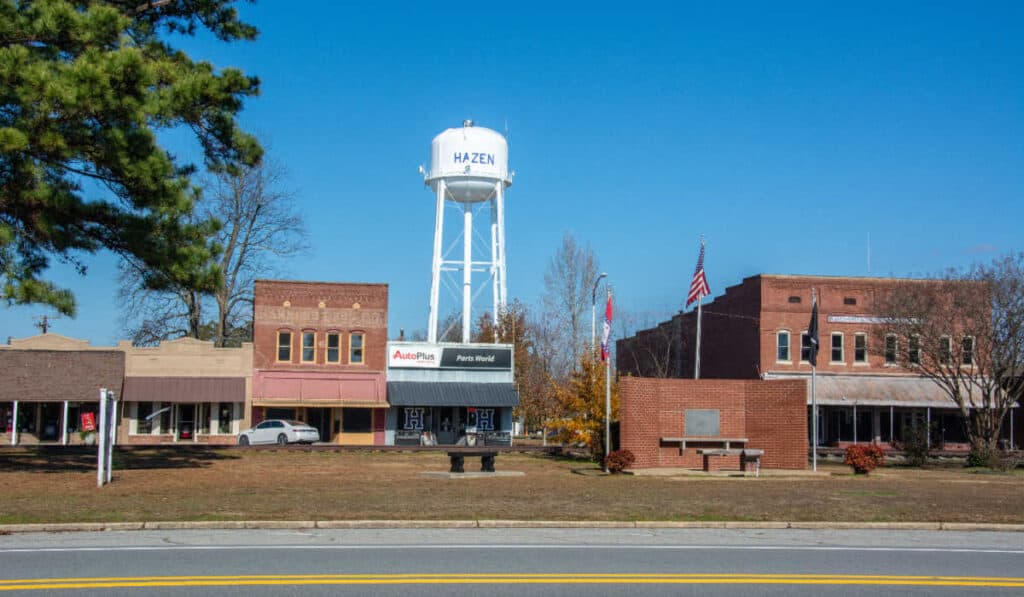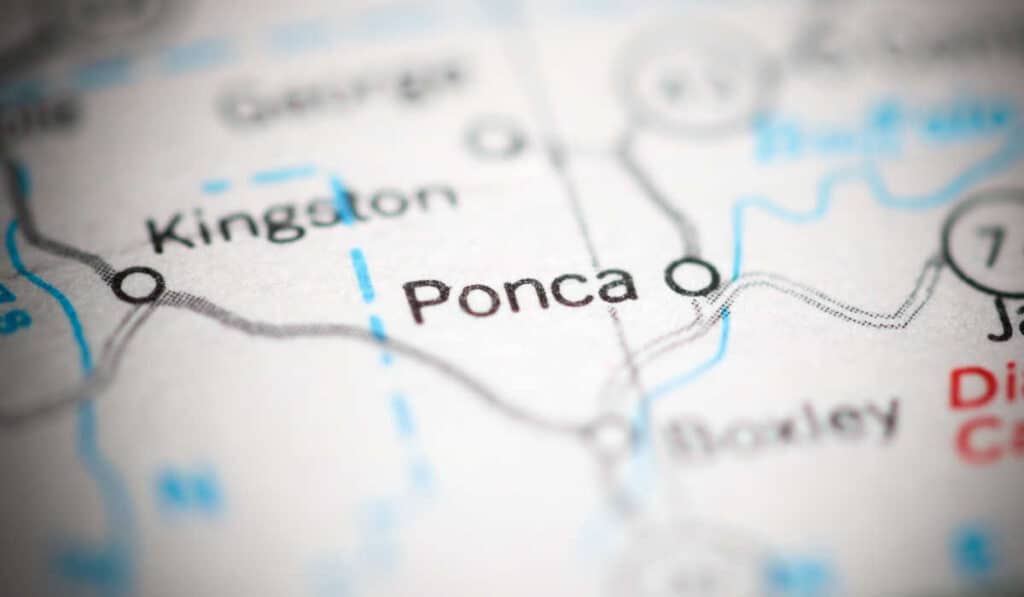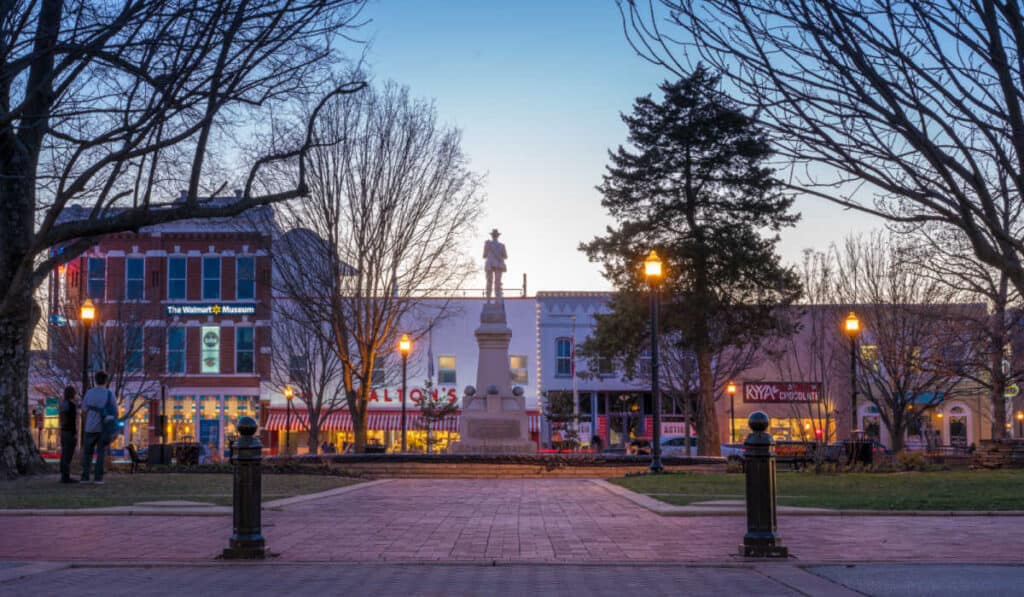Missouri’s geographical identity has long been a topic of debate. Known for its unique cultural and historical background, the state’s position on the border of the South and Midwest regions of the United States raises the question: is Missouri a Southern state? While there are arguments to categorize Missouri as both a Southern and Midwestern state, its distinct characteristics reveal a more complex story.
Located in the central United States, Missouri has ties to both the South and the Midwest. Historically, the state has experienced an influx of settlers from the south known as the Little Dixie region, and during the Civil War, Missouri was split between Union and Confederate supporters. This intricate history adds layers to the identity of Missouri, making it difficult to definitively categorize it as distinctly Southern or Midwestern.
To further explore the topic of Missouri’s regional identity, it is important to examine its cultural, political, and geographical traits in comparison to other states in both the South and Midwest. Doing so will provide a clearer understanding of where Missouri truly belongs in the ongoing debate of whether it is a Southern state or not.
Missouri’s Geographic Location
Missouri is a state located in the Midwestern region of the United States, covering an area of 69,714 square miles. It is bordered by eight states, which ties it with Tennessee for the most bordering states in the country. The northern boundary is shared with Iowa, while the eastern border is surrounded by Illinois, Kentucky, and Tennessee. On the southern side, Missouri meets Arkansas, and to the west, it is neighbored by Oklahoma, Kansas, and Nebraska.
The geography of Missouri is diverse and can be divided into different regions, such as the Dissected Till Plains and the Ozark Plateau. The Dissected Till Plains portion extends in the north, covering a bit more than a third of the state and lying mostly to the north of the Missouri River. On the other hand, the Ozark Plateau is located in the southern part of the state, including the southwestern border.
Missouri’s terrain is characterized by rolling hills, fertile plains, rugged Ozark highlands, and extensive river systems. The state is home to two major rivers, the Missouri River, and the Mississippi River, which play significant roles in transportation, agriculture, and recreation. In addition to rivers, Missouri boasts a plethora of lakes, such as the Lake of the Ozarks and Table Rock Lake, which are popular for their recreational opportunities.
In summary, Missouri’s geographic location in the southern part of the United States allows it to offer a variety of diverse landscapes and natural features. Its central location and numerous bordering states contribute to its unique regional influences, making it a fascinating state to explore and discover.
Cultural Factors
Missouri is often considered a Midwestern state with a hint of Southern flare. The state’s cultural landscape has been shaped by various factors and influences from nearby states like Texas and Louisiana.
Influence from Texas
Missouri shares some cultural similarities with Texas, especially in terms of cuisine and lifestyle. The popularity of barbecue in Missouri can be linked to the tradition of slow-cooking meats, a technique also prominent in Texas cuisine. Many Missouri residents enjoy participating in rodeos and attending country music events, both of which are staples of Texan culture. Additionally, the cowboy culture and rural lifestyle sometimes associated with Missouri have strong roots in Texan influence.
Influence from Louisiana
The cultural exchange between Missouri and Louisiana can be seen in several aspects of Missouri life. The city of St. Louis, for example, is known for its rich jazz and blues music scene, which owes much to the musical traditions of Louisiana. The annual Mardi Gras celebration in St. Louis is another example of the strong cultural bond between the two states, with numerous events and festivities inspired by New Orleans’ signature event.
Missouri’s cuisine has also been shaped by Louisiana’s Creole and Cajun influences. Gumbo, jambalaya, and other Southern dishes can be found in restaurants across the state, demonstrating the culinary connections between Missouri and Louisiana.
In conclusion, while Missouri may not be considered a quintessential Southern state, its cultural landscape has undoubtedly been shaped by its neighboring states like Texas and Louisiana. Through their shared love of food, music, and traditions, these influences have made a lasting impact on the everyday lives of Missourians.
Political Aspects
Missouri’s political landscape has historically been influenced by its location and its role in major American events such as the Missouri Compromise. While the state is geographically situated in the Midwestern region, its political aspects have displayed traits from both the North and the South, which has led many to debate whether Missouri should be considered a Southern state.
In terms of party affiliations, Missouri’s voting patterns have been known to swing between both major political parties. However, in recent years the state has shown a tendency to lean Republican, aligning it with the South in terms of partisan identification. This is evident in Missouri’s political representatives, as the majority of its congressional delegation are Republicans.
One key historical factor in Missouri’s political aspects is its role in the events leading up to the American Civil War. The state was admitted to the Union in 1821 as a result of the Missouri Compromise, which aimed to maintain a balance between slave and free states. This positioned Missouri as a border state, with a split population of both pro-slavery and anti-slavery citizens. This division contributed to the state’s unique political identity, as it struggled to reconcile these opposing viewpoints.
Furthermore, Missouri’s cultural connections to both the North and the South have also played a role in shaping its political climate. While the state maintains strong ties to Midwestern culture, it also shares many characteristics of Southern states, such as conservative values and rural living. These cultural factors can influence the state’s political behavior, often leading to a mixture of Northern and Southern political ideals.
In summary, while Missouri’s political aspects contain elements of both Northern and Southern states, it is difficult to categorize it strictly as a Southern state. Its diverse political history, combined with its unique geographical and cultural position, make Missouri’s political landscape distinct and complex.
Economic Ties
Missouri’s economy has historically been influenced by its diverse population, industrial base, and agricultural production. While still a largely rural state, it has experienced modest population growth since the mid-20th century, which has given rise to a mix of economic outcomes. Growth in the southwestern region of Missouri has primarily been due to an increase in the manufacturing and agricultural sectors, with the area not conforming to typical rural economic patterns as seen in other parts of the country.
Over the last five years, Missouri’s economic growth has been relatively slow, with average annual GDP growth at just 0.7%, compared to the 1.4% national average. Despite this, the state’s economy compares favorably to much of the nation in other aspects. Missouri’s central geographic location has provided it with direct access to its southern neighbors and other states across the country, potentially boosting its economic ties to both the northern and southern regions of the United States.
The state’s economy benefits from diverse industries, as well as its natural resources, such as those found in the Ozarks, a forested highland that provides timber, minerals, and recreation opportunities to both Missouri and its neighboring states. Furthermore, the agricultural sector has played an essential role in supporting not just the local economy, but also contributing to the economies of its neighboring southern states.
Currently ranked 31st in the United States for its economic outlook, Missouri continues to remain an economically diverse state with connections throughout the country. By maintaining its agricultural roots alongside its growing industrial presence, Missouri sustains its economic ties to both the northern and southern regions, highlighting its unique positioning as a state on the economic landscape of the United States.
Historic Perspective
The state of Missouri has a complex history that contributes to its identity and whether or not it is considered a southern state. When Missouri was admitted to the Union as the 24th state in 1821, the Missouri Compromise played a significant role in shaping its identity. This compromise allowed Missouri to enter as a slave state while Maine was admitted as a free state, maintaining a balance between the pro-slavery and anti-slavery factions in Congress.
Geographically, Missouri is located in the Midwestern region of the United States but also shares characteristics with southern states. The area known as “Little Dixie” along the Missouri River has historical ties to the plantation economy of the South, including the use of enslaved labor. This region became a cultural and economic center that contributed to Missouri’s southern identity.
In the years leading up to the Civil War, Missouri experienced significant conflict on its western border with Kansas. This conflict, known as “Bleeding Kansas,” was characterized by violent skirmishes between pro-slavery and anti-slavery settlers in the Kansas Territory. As a result, Missouri gained a reputation as a battleground state, where tensions between the North and the South played out.
During the Civil War, Missouri was a border state, meaning it allowed slavery but remained loyal to the Union side. This further complicated the state’s identity, as it had ties to both the Northern and Southern causes. After the war, Missouri’s history of codified racial segregation and ongoing social and economic connections with southern states deepened its southern identity.
In more recent times, cultural shifts have continued to blur the lines of Missouri’s geographic and historical identity. For instance, the University of Missouri’s inclusion in the Southeastern Conference, which traditionally consists of southern states, further solidifies its connection to southern culture.
Through its rich and varied history, Missouri alternates between a Midwestern and southern state identity. The lasting impact of the Missouri Compromise, regional characteristics, and its tumultuous Civil War history contribute to its complex and multifaceted nature.
St. Louis and Its Influence
St. Louis, the second-largest city in Missouri, has played a significant role in shaping the state’s identity. Located near the confluence of the Mississippi and Missouri rivers, this city has always been an important hub of transportation and commerce, often referred to as the Gateway to the West.
Founded as a fur-trading post in 1764 by Pierre Laclède Liguest, St. Louis has experienced significant growth and development throughout its history. The city’s strategic location on the major rivers facilitated its expansion as the main base for interregional trade in the 19th century. Additionally, in the 1840s, this metropolis became a popular destination for Irish and German immigrants, further influencing the cultural makeup of Missouri.
While St. Louis has undoubtedly had a significant impact on the development of Missouri, it is essential to acknowledge the region’s indigenous history. The area that would eventually become St. Louis was once home to the Illini Confederacy, a group of Native American tribes in the upper Mississippi River valley.
Culturally, St. Louis has been a melting pot of various influences, reflected in its contributions to American music, particularly blues and jazz. The city is known for being the birthplace of many legendary artists and has played a crucial role in the development of these musical styles.
In conclusion, as a major urban center and transportation hub, St. Louis has undeniably influenced Missouri’s identity. Its rich history, diverse cultural influences, and contributions to American music make it an essential part of the state’s character.
Establishing an Identity
Missouri’s identity has been a subject of debate since its inception. The Missouri Compromise of 1820 marked the beginning of an intense conflict over whether Missouri would align itself more with the North or the South. This compromise allowed Missouri to join the Union as a slave state, while Maine entered as a free state.
From its early days, Missouri was home to two distinct “heritage groups” within its borders. One group saw themselves and the state as distinctly southern, while the other embraced a more western identity. This cultural divide within the state has continued to shape its identity even in more recent times.
Regarding the entities mentioned:
- EST: In the context of Missouri, the abbreviation “est” could refer to the Eastern Standard Time zone. However, Missouri is located in the Central Time Zone and this abbreviation doesn’t seem relevant to discussing its identity or whether it is a southern state.
- Campus: The educational institutions within Missouri can also influence its identity. For example, Abbeville Institute states that the University of Missouri, founded in 1839, was based on the southern model. The institution’s policies, curriculum, and faculty were drawn from prominent southern colleges. This connection with southern educational traditions can highlight Missouri’s ties with the South.
In conclusion, Missouri’s identity as a southern or western state has been a matter of debate since its early days. The Missouri Compromise and the influence of southern traditions in some of its educational institutions have contributed to its southern association. However, other factors, such as its western geographical location and cultural diversity, also play a role in shaping its unique identity.
Conclusion
Missouri’s classification as a southern state can be a topic of debate due to its unique position in the United States. While an official U.S. census map places Missouri in the Midwest, some aspects of its history and culture might lead people to consider it as part of the South.
The Missouri Compromise in 1820 played a significant role in the state’s history. This agreement allowed for the admission of Missouri as a slave state, balancing the number of free and slave states in the Union. This event marked the beginning of a long-standing sectional conflict over slavery that ultimately led to the American Civil War.
Culturally, Missouri shares some similarities with southern states, such as a humid subtropical climate. Additionally, some areas of southern Missouri and northern Arkansas feature a higher prevalence of Confederate flags as a cultural symbol that may align more with southern states’ identity.
In conclusion, Missouri’s position as a southern state is not clear-cut, with aspects of its geography, history, and culture connecting it to both the Midwest and the South. The debate over Missouri’s classification may continue, but it is essential to consider the various factors contributing to its unique regional identity.







